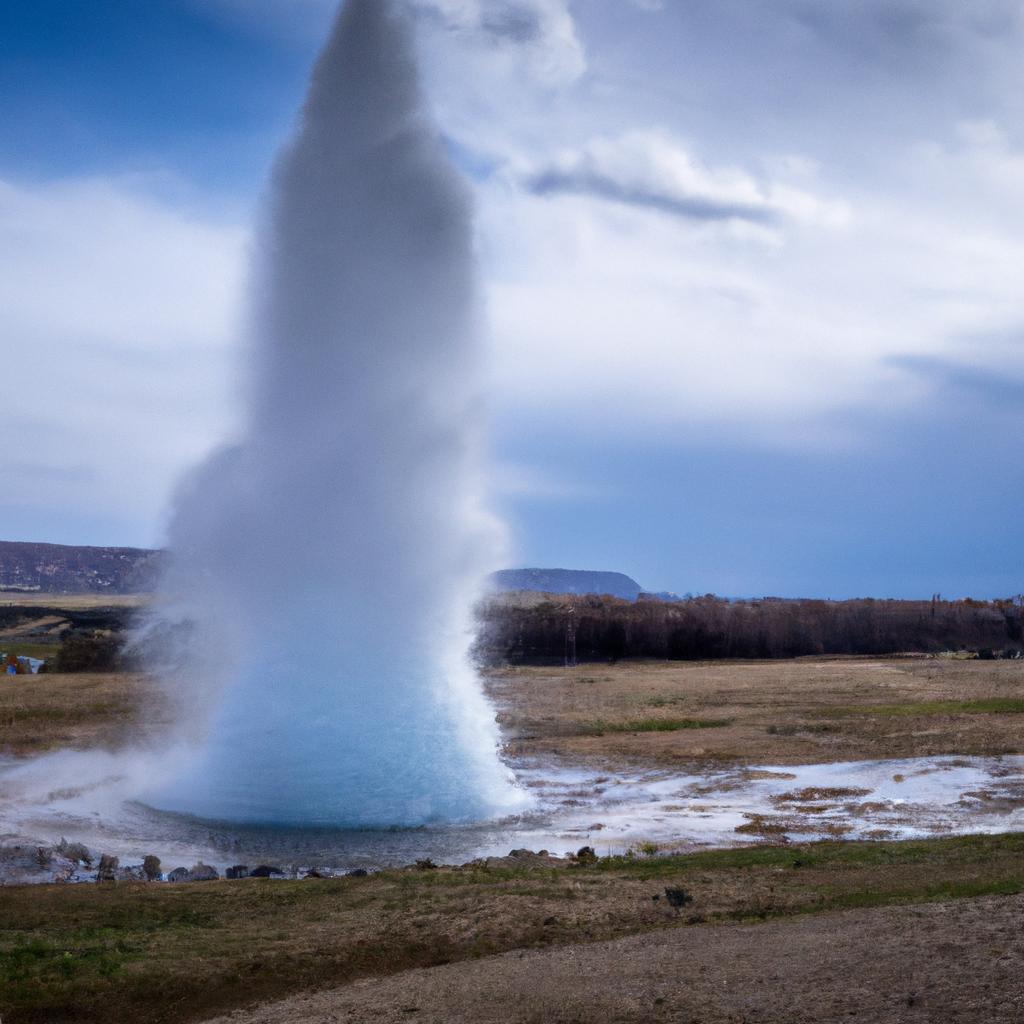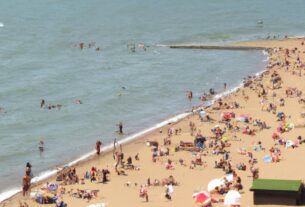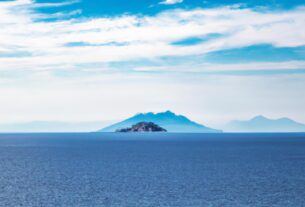When we imagine Iceland, we often envision majestic waterfalls, immense glaciers, and breathtaking landscapes. However, what many people overlook is the incredible natural wonder that exists in this country – geysers. These geological marvels are a product of Iceland’s unique geothermal activity, making them an absolute must-see for any nature lover.
Unveiling the Wonders of Iceland’s Geysers
Geysers are hot springs that periodically erupt with steam and water, shooting as high as 100 feet into the air. Iceland boasts some of the largest and most active geysers in the world. One such geyser, called Geysir, located in the Haukadalur Valley, has been erupting for over 10,000 years. Another geyser in the same valley, named Strokkur, erupts every 5-10 minutes, spouting water in a magnificent display of natural power.
Iceland’s geysers go beyond being impressive displays of natural forces. They hold great cultural significance for Icelanders, with countless stories and legends surrounding their creation. Moreover, Iceland’s geothermal activity has become an essential element in the country’s energy production, offering a sustainable source of electricity and heat.
Nevertheless, the most crucial role of Iceland’s geysers is their allure as a tourist attraction. Visitors from around the world flock to the Haukadalur Valley to witness these extraordinary natural wonders firsthand. The geysers provide a unique opportunity to witness the raw power of nature, and their accessibility makes them a favored destination for families and adventurers alike.
A Glimpse into the History of Iceland’s Geysers
Origins of Iceland’s Geothermal Activity
Iceland owes its geothermal activity to its location on the Mid-Atlantic Ridge, where the North American and Eurasian tectonic plates converge. This geological positioning results in a high level of seismic activity, including volcanic eruptions and earthquakes. Consequently, Iceland is home to over 200 volcanoes, many of which remain active to this day.
This geothermal activity manifests itself in the form of hot springs, geysers, and steam vents, providing Iceland with abundant natural resources. Remarkably, over 90% of Iceland’s energy is derived from geothermal sources, making it one of the world’s leading producers of sustainable energy.
Geysers in Icelandic Culture
For centuries, geysers have held significant cultural value for Icelanders. The word “geyser” itself originates from the Icelandic term “geysa,” meaning “to gush.” The folklore of Iceland is replete with tales featuring geysers, particularly the Geysir in the Haukadalur Valley.
One popular legend recounts the story of a woman accused of witchcraft who was thrown into the Geysir as punishment, only to emerge unscathed. This extraordinary event convinced the locals that she was indeed a witch. Another legend tells of a man who underwent a sacrificial ritual, cast into the Geysir as an offering to the gods, only to be saved by the intervention of a nearby priest.
Famous Geysers in Iceland
Apart from Geysir and Strokkur in the Haukadalur Valley, Iceland is home to several other notable geothermal areas. The Geysir, with its 10,000-year eruption history, still amazes visitors, albeit less frequently these days. In contrast, the Strokkur geyser erupts every 5-10 minutes, shooting water up to 60 feet high. Positioned just a short stroll from the Geysir, it has become one of Iceland’s most popular tourist attractions.
In addition to these renowned geysers, Iceland is dotted with numerous hot springs and geothermal sites that deserve exploration. From the iconic Blue Lagoon to the serene Myvatn Nature Baths, Iceland brims with natural wonders waiting to be discovered.
The Mechanics Behind Geysers
Understanding the Science of Geysers
Geysers represent a captivating natural phenomenon that has fascinated scientists and visitors for centuries. Geysers are essentially hot springs with a unique characteristic – they periodically erupt with steam and water. But what triggers these explosive displays of power?
The science behind geysers is relatively straightforward. Water seeps into the ground and encounters hot rocks or magma, heating it well above its boiling point. However, due to the pressure from the earth above, the water remains in a liquid state. Once the water reaches a certain temperature, it begins to boil, generating steam and bubbles. These steam and bubbles rise to the surface, but the pressure prevents the water from boiling over. Instead, it is forced back down, commencing the cycle anew.
Factors Influencing Geyser Eruptions
While the basic mechanism of geysers is simple, several factors influence the timing and frequency of eruptions. The shape and size of the geyser’s underground plumbing system play a significant role. If the plumbing system is narrow and constricted, pressure builds up rapidly, leading to more frequent eruptions. Conversely, wider and more open plumbing systems release pressure more gradually, resulting in less frequent eruptions.
Temperature, both of the water and the surrounding environment, also affects geyser eruptions. Higher water temperatures lead to quicker boiling, thus increasing eruption frequency. Conversely, cooler surroundings cause the water to heat up more slowly, resulting in fewer eruptions.
Iceland’s Geysers in Comparison
While Iceland’s geysers are among the most impressive globally, they are not the only geysers on Earth. Other well-known geyser sites include Yellowstone National Park in the United States, the North Island of New Zealand, and the Kamchatka Peninsula in Russia.
One notable distinction between Iceland’s geysers and those in other regions lies in the frequency and predictability of eruptions. Iceland’s geysers, particularly Strokkur, are renowned for their frequent and predictable eruptions, attracting tourists from around the world. In contrast, many geysers in Yellowstone National Park exhibit less predictability, with some erupting only once every few years.
Regardless of location, geysers remain a remarkable natural phenomenon that never ceases to captivate visitors.
Embarking on the Journey to Iceland’s Geysers
If you are planning a trip to Iceland, visiting the country’s geysers should be at the top of your itinerary. These natural wonders are easily accessible and offer an unforgettable experience for visitors of all ages. Here’s what you need to know to plan your visit:
Discovering Popular Geyser Sites in Iceland
The Haukadalur Valley is home to Iceland’s most renowned geysers, including Geysir and Strokkur. Geysir, the oldest known geyser globally, has been erupting for over 10,000 years. While it is no longer as active as it once was, its eruptions still captivate audiences. Strokkur, on the other hand, erupts every 5-10 minutes, making it a favorite spot for experiencing the raw power of nature.
Other notable geyser sites in Iceland encompass the Hverir geothermal area in the north, showcasing bubbling mud pools and steam vents, and the Reykjanes Peninsula, which boasts the Gunnuhver hot spring and picturesque walking trails.
Tips for Planning Your Geyser Visit
When planning your visit to Iceland’s geysers, keep a few things in mind. Firstly, dress appropriately for the Icelandic weather, which can be unpredictable. Bring warm, waterproof clothing and sturdy shoes. Also, anticipate crowds. Iceland’s geysers are popular tourist attractions, so scheduling your visit for early morning or late evening will help you avoid the busiest periods.
Transportation is another vital consideration. While some geysers are accessible via public transportation, many are not. Renting a car or joining a tour group often proves the simplest way to reach these sites.
Choosing the Best Time to Visit
Iceland’s geysers are accessible year-round, but the ideal time to visit depends on your preferences. Summer brings long days and mild temperatures, showcasing Iceland’s natural beauty at its finest. However, if you wish to witness the mesmerizing Northern Lights and avoid crowds, winter might be a better choice.
Regardless of when you decide to visit, Iceland’s geysers will undoubtedly be a sight to behold, leaving you in awe of nature’s power.
Embracing the Beauty of Iceland’s Geysers
In conclusion, Iceland’s geysers epitomize the extraordinary power and beauty of nature. These geological wonders have captivated visitors to Iceland for centuries, playing an integral role in the country’s culture and history. Furthermore, they contribute significantly to Iceland’s sustainable energy production.
However, the environmental impact of geothermal activity in Iceland should not be overlooked. While geothermal energy offers a promising renewable resource, it must be managed carefully to avoid detrimental effects on the surrounding environment. Ongoing efforts to minimize this impact are essential.
As visitors to Iceland, we bear a responsibility to preserve this remarkable country. By practicing sustainable tourism and respecting the natural environment, we can ensure that Iceland’s geysers continue to inspire awe for generations to come.
Thank you for joining me on this enlightening journey through Iceland’s geysers. I hope this article has left you inspired to plan your own visit to these incredible natural wonders. For more articles on nature, gardening, and animals, check out TooLacks. Let’s work together to protect and appreciate the beauty of our planet. TooLacks



